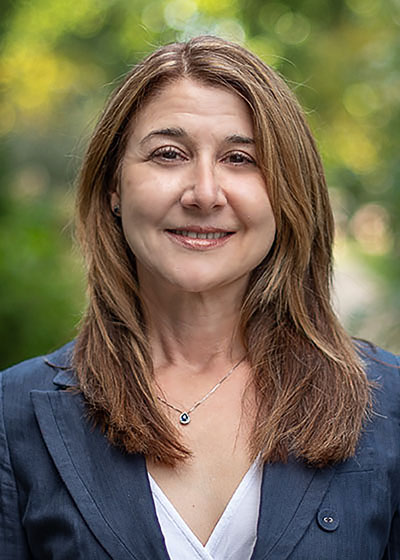
Celebrating successes while looking ahead
Every year at this time as the weather begins to cool and the leaves turn brilliant colors at University Park, I reflect on MatSE’s accomplishments, evaluate our present, and chart our path for the future. From this perspective, my ‘State of the Department’ presentation is formulated, and I deliver this presentation to MatSE stakeholders.
I’d like to share a few key indicators that reflect where our department currently stands, and why it’s clear to me that this is an exciting time to be part of MatSE at Penn State!
This year, we welcomed the largest cohort of first-year materials science and engineering majors in MatSE history, with fifty students enrolling in the program. The undergraduate program has been ranked No. 10 in U.S. News & World Report’s Best Materials Engineering Programs, while the graduate program holds the No. 11 ranking. In addition, more than $300,000 is awarded annually in merit- and need-based scholarships for undergraduate students, reflecting the department’s strong commitment to supporting student success.
Fall 2024 enrollment remains robust, with 190 undergraduate and 182 graduate students, reinforcing MatSE’s continued appeal to top talent. The department’s research expenditures also reached an impressive $17.1 million for the 2023–24 academic year, further solidifying its reputation as a leader in cutting-edge research.
Significant funding announcements have also added to MatSE’s momentum. The U.S. Department of Energy (DOE) announced continued support with a new $14,525,000 award for Penn State’s Center for Three-Dimensional Ferroelectric Microelectronics Manufacturing (3DFeM) as an Energy Frontier Research Center. The center, led by Susan Trolier-McKinstry, Evan Pugh University Professor and Flaschen Professor of Ceramic Science and Engineering, boasts the world’s most comprehensive facilities for the deposition, characterization, and integration of ferroelectric materials—critical for applications such as memory storage devices, capacitors, and sensors due to their ability to maintain polarization after an external field is removed.
In addition, Robert Hickey, associate professor of materials science and engineering, will co-lead a team of researchers awarded a five-year, $4.5 million Multidisciplinary University Research Initiative (MURI) grant from the U.S. Department of Defense, through the Office of Naval Research. The project, Photochemical and Photothermal Additive Manufacturing of Preceramic Polymers, aims to develop a one-step process for producing ultra-high-temperature ceramic materials without bulk heating.
Another noteworthy development is the $600,000 grant awarded to the Penn State Silicon Carbide Innovation Alliance (SCIA), led by Joshua Robinson, professor of materials science and engineering, from the Appalachian Regional Commission to create educational courses, workshops, and paid academic and industrial internships focused on workforce development for Pennsylvania’s growing semiconductor industry.
The department also celebrated the achievements of its faculty in materials innovation. LionGlass, a new family of glass developed by John Mauro, Dorothy Pate Enright Professor of Materials Science and Engineering, and Penn State researchers, has secured its first corporate partner, Bormioli Luigi, an Italian glassmaker. This is a significant step toward bringing this eco-friendly alternative to standard soda-lime silicate glass to market.
In terms of student and laboratory safety, MatSE announced the establishment of a new MatSE Safety Fund, with the support of Elizabeth “Libby” Kupp, a retired faculty member and longtime advocate of safety awareness. The fund will provide safety training for students and help ensure that our labs remain safe environments.
Every day as head of MatSE, I feel privileged to collaborate with our dedicated faculty, researchers, staff, students, and alumni. At Penn State, we live by our motto, 'We Are,' and our incredible MatSE community truly exemplifies it.
Here’s to another outstanding academic year ahead!

Susan B. Sinnott
Professor and Head of the Department of Materials Science and Engineering
To read more about stories mentioned above visit Imagine, Fall/Winter 2024

